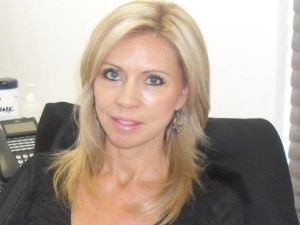
How dramatically technology has changed in the last decade or so since that memorable New Year's Eve on 31 December 1999 anxiously awaiting news on the possible impact of Y2K and the possible effects that it may have, says Sonya Munro, CEO of Craison Group.
Little did I realise that this would mark the dawning of a new era, a new millennium, bringing about a rapidly ever-changing hyper-connected world of information communications technology or ICT as we know it today, significantly altering our personal lives and the business landscape forever.
With our new world abuzz with digitisation, ICT has us reeling, struggling to keep up with the latest hype in information technology advancement and buzz words like ADSL, AGP, ALU, AMD, APC, ASCII, ASIC, ASPI, AT, ATI, ATX and I stopped after only those beginning with the letter A, as there are many more for every letter of the alphabet!! (of course I managed to obtain these compliments of the WWB, Google and Kioskea.net, not to mention that this particular list mentioned represents the commonly known acronyms for the IT industry as we know it today).
Digitisation has indubitably had wonderful societal and economic impact, effecting economic growth and job creation around the world. According to Global Information Technology Report 2013 of the World Economic Forum, it has been estimated that in emerging markets, a comprehensive digital boost could help lift over half a billion people out of poverty over the next decade. Staggering numbers!
Similarly, ICT has also boomed in South Africa in the last decade, with SA now boasting well established and sophisticated systems, the most advanced in Africa, in fact world leaders in some fields.
The question I pose, is, who is cleaning IT?
In my viewpoint government and enterprise need to take cognisance of the health hazards associated with the use of dirty IT equipment such as copiers, keyboards and telephones to name but a few.
IT equipment are ideal incubators for pathogens to live and propagate, contaminated equipment can cause minor illnesses such as the common cold as well as more serious viruses such as E. coli and MRSA. Minor illnesses are the leading cause of absenteeism that is often caused by dirty workplace equipment. It is estimated that absenteeism is costing South African business on average R8 200 per employee each year.
A regular IT cleaning programme will not only eradicate bacterial microbes, but also prevent the build of debris and grime, together with preventing static cling, thereby eliminating the threat of accumulation of dust particles that causes damage to hardware.
The long-term benefits of enlisting a sanitation service for IT equipment not only takes care of our responsibility as stakeholders and business leaders, but also reduces unnecessary spend due to staff sickness and hardware replacement, making this essential service very much affordable, even in times of economic downturn.
About the author: Sonia Munro is the CEO of the Craison Group of Companies offering a wide variety of facilities management support services since 1998. Craison is a sponsor of the ITWeb Security Summit, which takes place from 27-29 May at the Sandton Convention Centre. For full programme information, and to plan your visit to the comprehensive expo go to www.securitysummit.co.za
Share
Editorial contacts